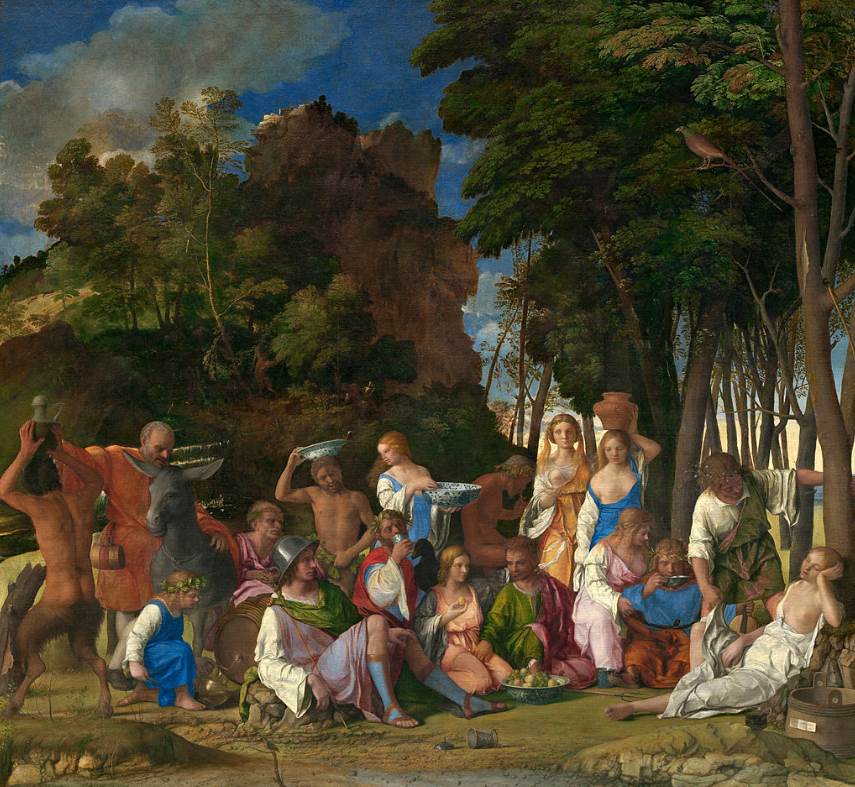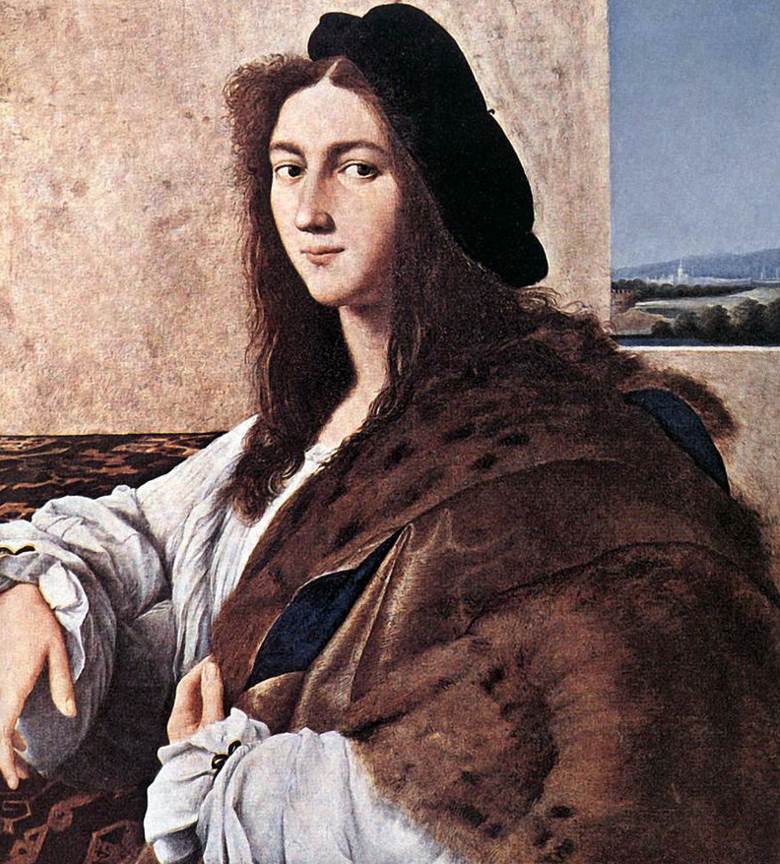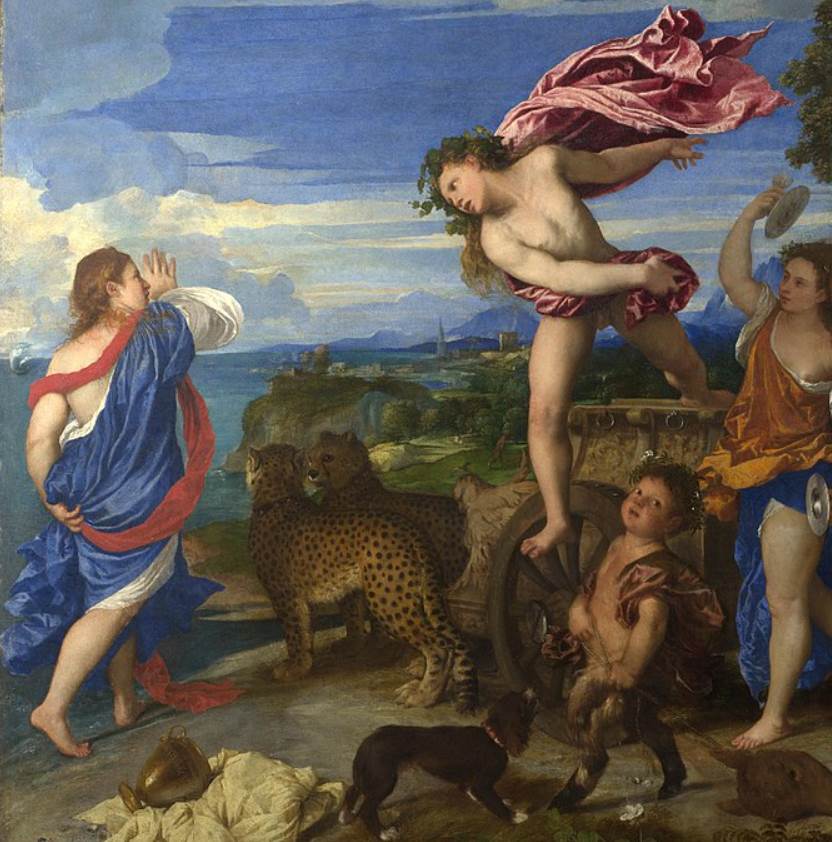Tiziano Vecelli (1488-1576), an artist better known by his nickname Titian, had one of the most extensive careers in art history. It started in the early 16th century and ended nearly 8 decades later in the 1570s.
The Italian artist was extremely successful the moment that he picked up his brushes and his paintings became some of the most sought-after artworks in Europe.
One of these remarkable works of art was painted for a rich patron in a northern Italian city and was part of a series of paintings.
Let’s take a closer look at some of the most interesting facts about Bacchus and Ariadne by Titian, a fascinating work of art by one of the ultimate masters of his time.
1. The painting was completed in the early 1520s
It’s unknown when Titian was born, which is remarkable because he became one of the most famous artists in Europe in the 16th century. He as apprenticed in Venice at a young age and became a master while he was still in his teenage years.
A Man with a Quilted Sleeve (1509) was one of his first major works and he started earning commissions all across northern Italy during the second decade of the 16th century, the height of the High Renaissance.
He was already one of the greater Venetian painters when he earned the commission to paint this mythological scene known as “Bacchus and Ariadne.”
The painting was completed between 1522 and 1523, over 5 years after the completed his masterpiece “Assumption of the Virgin” (1515-1518) and around the same time that he worked on the monumental “Pesaro Madonna” (1518-1526).

2. It was commissioned to decorate a palace in the city of Ferrara
The painting was commissioned by Alfonso I d’Este, Duke of Ferrara (1476-1534). He intended to hang it in the Camerino d’Alabastro, one of the duke’s private rooms inside his palace in the city.
Ferrara is the capital of the province of Ferrara today in the modern-day region of Emilia-Romagna. It’s not that far southwest of Venice and just south of the Po River.
The Duke of Ferrara was a great patron of the arts and employed multiple great artists, including Giovanni Bellini (1430-1516) in his later years and subsequently his pupil Titian.

3. It wasn’t the only painting completed by Titian in this cycle
Titian wasn’t the first artist to be employed by Alfonso I d’Este. He originally commissioned the artist’s master, Giovanni Bellini, to complete an amazing work of art to decorate his palace.
This painting is called “The Feast of the Gods” (1514) and is part of the collection of the National Gallery of Art in Washington D.C. It was probably completed by Titian and is referred to as “The Greatest Renaissance Painting in the United States.”
Other paintings completed by Titian for the Duke of Ferrara around this time were “The Bacchanal of the Andrians” (1523-1526) and “The Worship of Venus” (1518-1519).

4. The commission was originally given to another Renaissance master
One of the most remarkable facts about Bacchus and Ariadne is that the commission wasn’t initially given to Titian but to Raphael (1483-1520), one of the great masters of the High Renaissance.
He already made preparatory sketches and even received a partial payment for a commission that was to depict his version of the Triumph of Bacchus.
Because Raphael died in 1520 from the flu while he was living in Rome, he never managed to complete the work and the commission was transferred to Titian instead.

5. The painting depicts a story derived from ancient Roman works
The painting depicts a mythological story of Bacchus, the Roman god of wine, and Ariadne, a Cretan princess in Greek mythology. The story was derived from either Roman poet Catullus or Ovid’s Metamorphoses.
We can see Ariadne who is left behind on the island of Naxos by her lover Theseus. On the left of the painting, we can see Theseus’ ship sailing off after he dumped his ex-girlfriend.
The cohort on the right is the following of Bacchus, the wine god who instantly falls in love with the beautiful Ariadne. He is depicted jumping out of his chariot to protect the frightened girl from the wild animals that are pulling his vehicle.

6. The stars in the blue sky have a special meaning
The painting features two triangular compositions, one that culminates in the blue sky on the left and one that captures the hectic group of people on the right.
The stars in the blue sky represent the star constellation Corona Borealis or “Northern Crown.” If the story is derived from Catullus’ work “Ars Amatoria” then the stars appeared after Bacchus promised Ariadne the entire sky.
If the story is derived from Ovid’s Metamorphoses then this constellation was formed after Bacchus threw Ariadne’s crown into the sky.

7. The animals in the painting weren’t the same as in Ovid’s story
The artist added his signature to the gold urn that is laying on the ground in the bottom left corner. This signature reads “TICIANVS.” This could have been one of the items in the collection of the Duke of Ferrara.
A common figure in Titian’s paintings were dogs, in this case, King Charles Spaniel that is barking toward the group of people that is arriving at the scene. Some art historians believe that this might have been a pet at the duke’s court.
The most remarkable animals in the painting are the two leopards that are pulling the chariot of Bacchus. In Ovid’s story, these are tigers. Titian probably found inspiration for these leopards from the duke’s private zoo.

8. A restoration in the 1960s changed the color effect of the work
The painting has suffered a lot during its history, mainly because it was rolled up at least during the first century after it was completed. This has resulted in the paint starting to flake off in modern times.
Starting in the 19th century, the painting was restored multiple times to avoid the paint falling from this magnificent work of art.
A serious restoration project took place between 1967 and 1969 and this turned the ultramarine pigment of the sky into a much brighter color than in the original work. Despite this, most of the paint of the work is original according to technical analysis.
9. How big is Bacchus and Ariadne by Titian?
Mos mythological paintings by Titian were produced at a monumental scale. Despite this notion, this work is far from being the biggest work in the oeuvre of the Venetian master.
This oil on canvas painting has dimensions of 176.5 × 191 centimeters (69.5 × 75 inches).

10. Where is the painting located today?
The painting entered the collection of the National Gallery in London in 1826 and is one of the 19 paintings by Titian on display at this popular museum in London.
It entered the collection in 1826 and was joined recently by some other famous Titian paintings, including Diana and Actaeon and Diana and Callisto, both works completed between 1556 and 1559 for King Philip II of Spain.
You can admire this work of art in Room 10 of the National Gallery.

